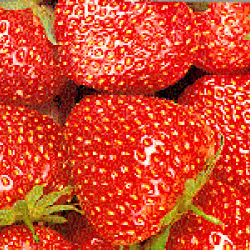Source Institutions
Source Institutions
Add to list Go to activity
Activity link broken? See if it's at the internet archive

In this activity related to plant biotechnology, learners extract DNA from fruit to investigate how it looks and feels. The procedure is similar to what scientists have to do before they can use information contained in this DNA. This lesson guide includes procedure and discussion questions to help learners reflect on the process and purpose of DNA extraction.
- 4 to 24 hours
- 45 to 60 minutes
- $10 - $20 per group of students
- Ages 11 - 18
- Activity, Experiment/Lab Activity, Lesson/Lesson Plan
- English
Quick Guide
Materials List (per group of students)
- 10 ml of clear shampoo (Suave daily clarifying shampoo)
- 1.5 g of table salt
- Distilled H20
- 1-liter Zipper bag with 20 ml of extraction buffer
- Skinned and freshly cut kiwi fruit (each fruit cut into 12 pieces) or one large strawberry
- 500 ml beaker
- Hot water plate with beaker or saucepan of water set at a constant 60°C
- Cheese cloth (cut to fit over small beaker)
- Tape
- Large cooler with ice water bath
- Ice cold 95% ethanol
- 1 small test tube
- 1 wood applicator
- Transfer pipettes
Subjects
-
Engineering and Technology
-
Engineering
- Agricultural Engineering
- Bioengineering/Biomedical Engineering
-
Technology
- Agriculture and Biotechnology
-
Engineering
-
Life Sciences
-
Cells
- Cell Structure and Function
-
Diversity of Life
- Plants
-
Heredity and Genetics
- DNA Structure and Function
- Genetic Engineering
-
Cells
-
Physical Sciences
- Chemistry
-
The Nature of Science
-
The Scientific Process
- Conducting Investigations
- Formulating Explanations
- Communicating Results
- Science as a Career
-
The Scientific Process
Informal Categories
- Food and Cooking
Audience
To use this activity, learners need to:
- see
- read
- touch
Learning styles supported:
- Involves teamwork and communication skills
- Involves hands-on or lab activities
Other
Components that are part of this resource:
This resource is part of:
Access Rights:
- Free access
By:
- Stephens, Janice ; Leach, Jan
Rights:
- All rights reserved, The American Phytopathological Society, 2011
